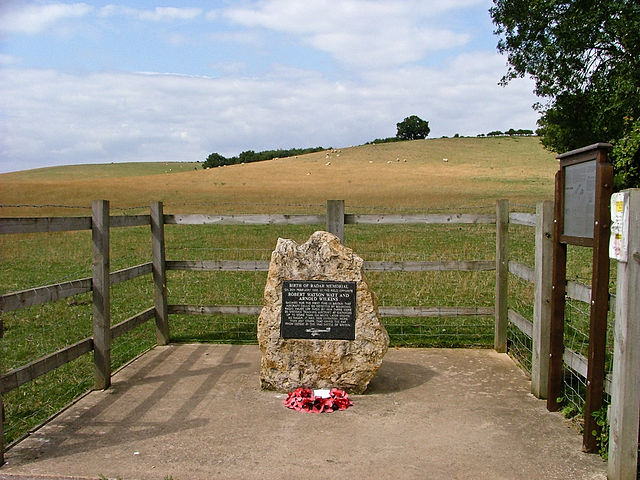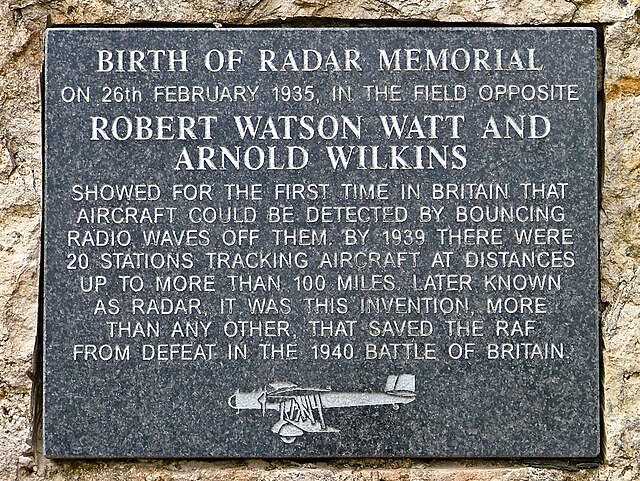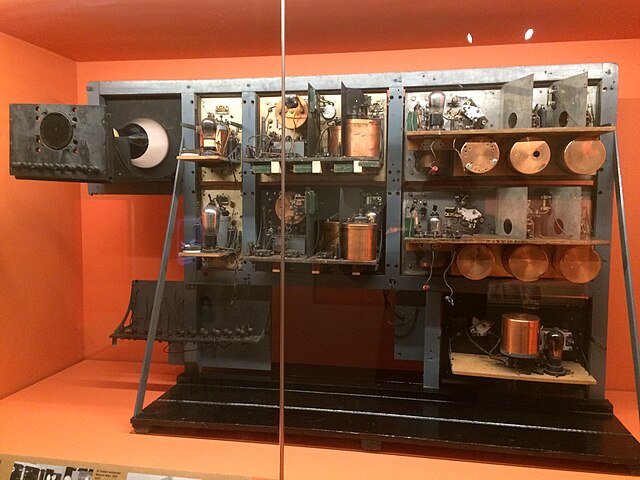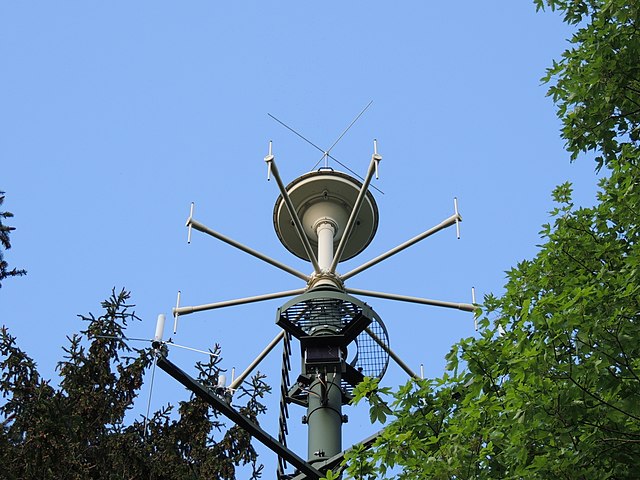Sir Robert Alexander Watson Watt was a British pioneer of radio direction finding and radar technology.
Robert Watson-Watt
Memorial at the Daventry site of the first successful RADAR experiments. 52°11′46″N 1°03′00″W / 52.195982°N 1.050121°W / 52.195982; -1.050121
Closeup of memorial plaque
The first workable radar unit constructed by Robert Watson Watt and his team
Direction finding (DF), or radio direction finding (RDF), is the use of radio waves to determine the direction to a radio source. The source may be a cooperating radio transmitter or may be an inadvertant source, a naturally-occurring radio source, or an illicit or enemy system. Radio direction finding differs from radar in that only the direction is determined by any one receiver; a radar system usually also gives a distance to the object of interest, as well as direction. By triangulation, the location of a radio source can be determined by measuring its direction from two or more locations. Radio direction finding is used in radio navigation for ships and aircraft, to locate emergency transmitters for search and rescue, for tracking wildlife, and to locate illegal or interfering transmitters. During the Second World War, radio direction finding was used by both sides to locate and direct aircraft, surface ships, and submarines.

Radiotriangulation scheme using two direction-finding antennas (A and B)
Direction finding antenna near the city of Lucerne, Switzerland
W.G. Wade of the National Bureau of Standards uses a large multi-loop antenna to perform RDF in this 1919 photo. This is a fairly small unit for the era.
This Royal Navy model is typical of B–T goniometers. The two sets of "field coils" and the rotating "sense coil" are visible.








